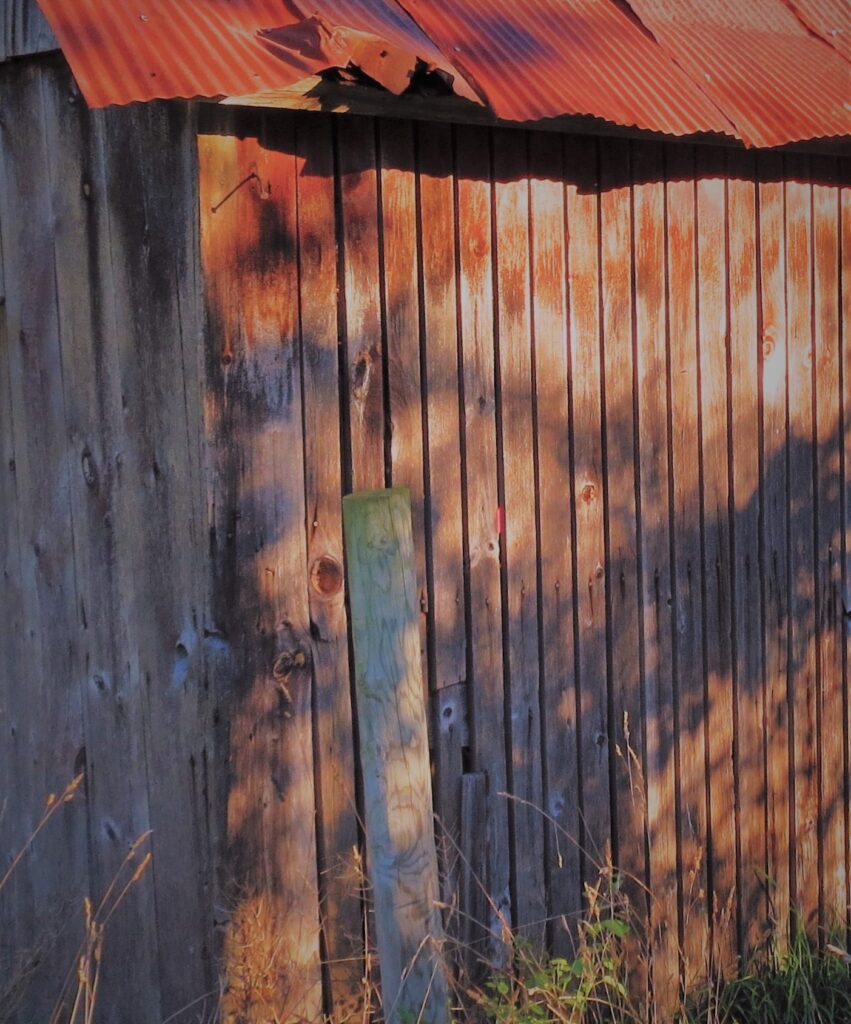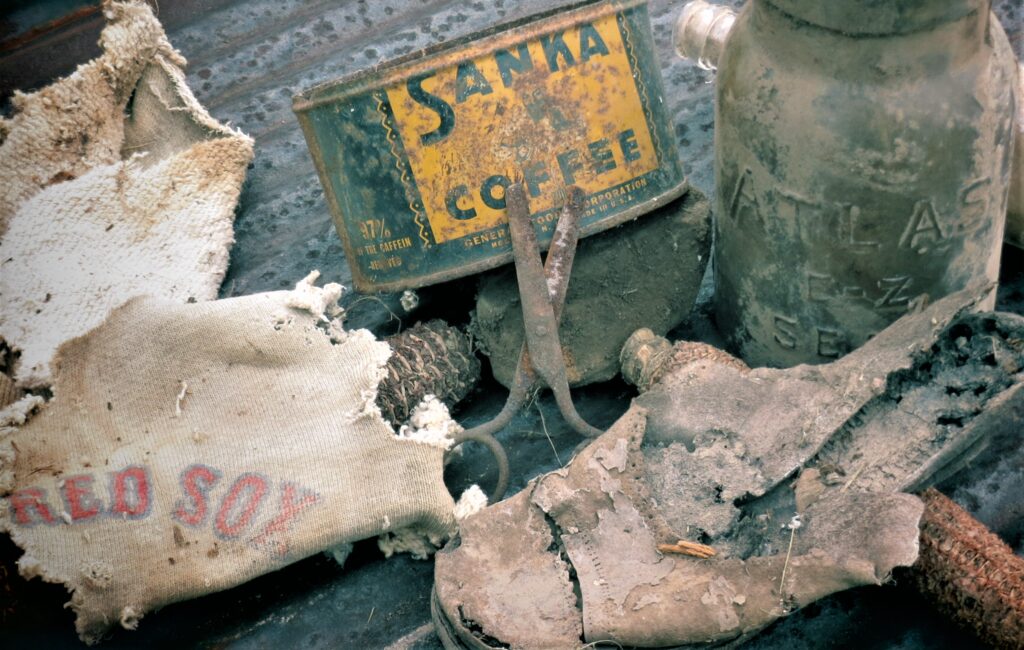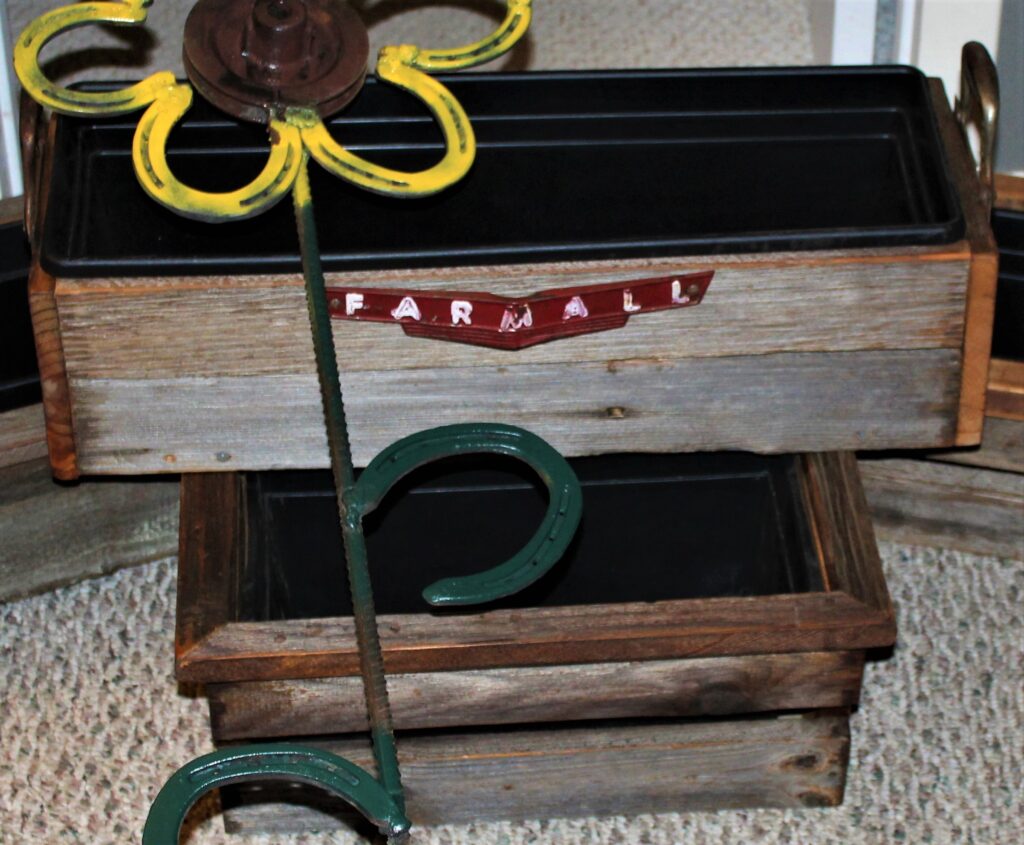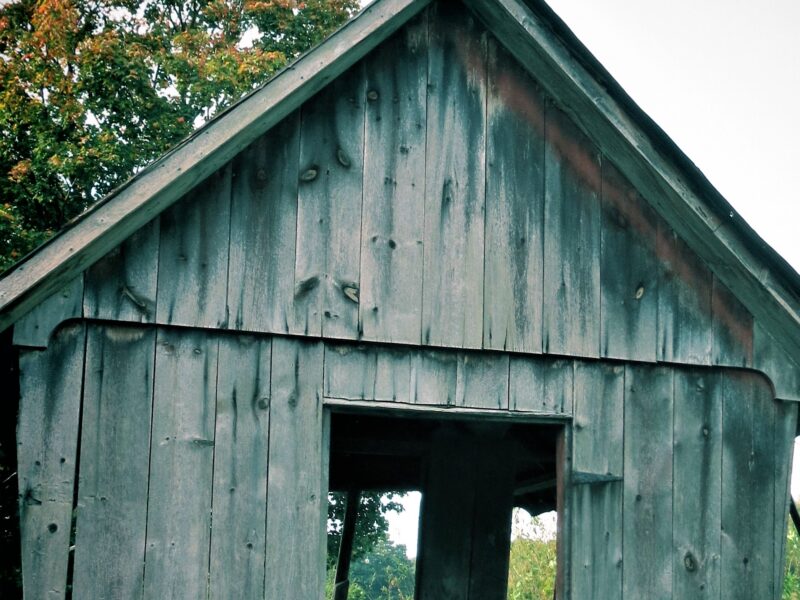When I touch old barn wood, I sense character, honesty and integrity. You might even say I’m smitten with an old piece of weathered reddish gray barn siding. It speaks to my farming heritage which exudes toughness, resiliency and true love. But like our present society, there aren’t that many farmers or aged barn wood left to tell the stories of the past.
You must know my tale about the life of our old corn crib contain stanzas where I shed some tears clinging to my great grandfather’s memory through humanizing his creation of wood and impeccable geometry. It’s been a good friend and symbol of enduring passion.
The crib was built over a hundred years ago within a complex of horse/hay, dairy and carriage barns. No doubt for easy access to the dried corn. It was constructed on top of six limestone cornerstones with a mixture of hemlock, cedar and maple support posts and roof joists. It was covered well with cedar shakes and had horizontal 2×2 inch slants with a half inch gap surrounding the entire V-patterned structure for uniform air flow. The bottom contained manly 2×10 inch floor boards encased in chicken wire to keep the vermin out. The final touch was the red paint (probably from the Clinton, N.Y. iron-ore factories) which aptly coated the virgin wood.

I can imagine my great grandfather Hubert and his son, young William standing back admiring the creation and filling it with the bright yellow cob corn. I close my eyes and can smell the fresh cedar, paint and kernels waiting to feed the hungry stock. It must have been a thing of beauty. The crib was diagonal from what the town’s lore told, was of the biggest dairy barn in Deansboro at the time. I’ve only seen a shadow of this behemoth in a black and white photo. This barn had a short life as my grandfather was derelict in his roof maintenance and it collapsed under the weight of a snow storm. My childhood recollection was of playing between the ghostly stanchions and rotted wood overgrown with grapevines and sumac while the crib looked on.
When my dad took over the farm and started raising beef cattle, we beefed up the roof with steel on the little ten by twenty foot crib. Filling it required us boys to play amongst the cobs like being at Chuck-E- Cheese’s ball pit, combing the hill of corn into all the corners and up near the roof. Structurally, we stretched its capacity to the limit, pretty oblivious to thinking about its age and historical presence. In retrospect, I can’t believe it held up to our punishment and overzealousness.
Like a lot of farms, we needed more capacity and easier filling so we built a much larger one on the end of our existing pole-barn that was closer to our newer dairy facility, leaving the smaller crib empty and alone to face the wicked west winds. It became just an old monument of days gone by until my daughters embarked on raising Alpine goats.
Like something out of a Shel Silverstein book, the goats frolicked in and out and around the little crib giving it purpose again. And then the girls grew up and the goat(ies) were sold to another family leaving the building to its devices, alone once again. If it were human I wonder what it would think about the 100 years of living on our farm. I can’t help but admire its tenacity to withstand the rust and rot, the weather, the burrowing woodchucks, the overly burdensome crop and all the animals rubbing the wood raw.
A month ago admiration turned to a dark reality, at the hands of this farmer. I’m sure many of you can relate to the difficult decision of taking down a family heirloom. In some respect, I feel like I’ve betrayed my ancestors but I think they would understand that change is inevitable. I can actually blame the grass and the high grain prices as to why I decided to remove the structure from its harmonious spot. With good grass feeding the livestock and the goal of not plowing, there is no reason to have an old corncrib anymore.
I tempered this demolition project with the utmost respect as to resurrect its soulful glory in other building projects. Like a surgeon, I meticulously removed every weathered slant and reddish hued clap board until only the skeleton of posts and beams showed. For the life of me, I couldn’t believe this minimalistic, simple design would stand up for a hundred years. In today’s building matrix, the headers were too small, the posts weren’t secured enough and the roof rafters were too far apart. It would make a structural engineer cringe.
The crib taught me about holism. As a whole being, it survived, but as soon as I removed its skin and parts, it collapsed in a heap.

Cleaning up this archeological site was probably the most exciting as at any moment I could uncover a trinket from the past or something from my ancestors of some significance. Maybe even a mason jar of money…. Not! As I sifted through the rubble I came across a pair of rusty, round-nosed scissors, elixir bottles, strap hinges, coffee cans, a wooden tongue and yoke, a chicken ramp, old shoes, mystery iron gears and parts, square nails and a frayed piece of an old Boston Red Sox jersey. I even found a timeworn child’s scissor gate which may indicate the corn crib might have housed some rambunctious toddlers during milking. I was left wondering why this hodge-podge of items was part of the crib. Was it also a catch-all for the land of misfit junk?
After the site was cleared to make room for round bale storage, I took stock of what I had harvested from the old corn crib. I was left with a treasure-trove of unique red and gray boards, posts, beams and knee braces weathered by nature that could adorn almost any future home or barn project. Its spirit to live on indefinitely made from the hands and skill of a simple farmer attuned with his surroundings. **To inquire or buy these types of trays, planters, etc. drop me a note. 🙂

This chapter in my life has proved significant as I try to find the balance between grasping the future and respecting the past. I’m thankful at this time of year for being there to lay a family friend to rest with dignity and the respect it deserves with the promise that its soul will come alive once again for my grandchildren. “Nature always wears the colors of the spirit.” ~ Ralph Waldo Emerson


 The Hurtful Word of 2020
The Hurtful Word of 2020 »
»